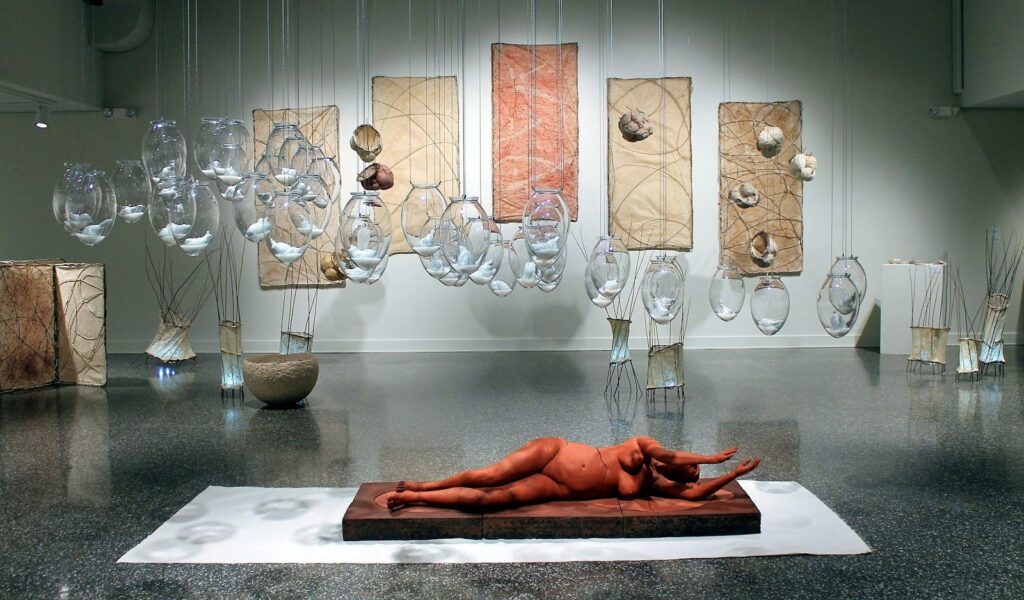
By Brent Nicholson, Contributive Writer
(All pictures by Allora McCullough)
“The honest truth,” Allora McCullough reveals, “is that I had transferred four times and McKendree was the fastest way to graduate.”
Allora McCullough graduated from McKendree, but she attended Belmont University, Southern Illinois University Edwardsville, and St Louis University prior to settling into the Economics and Finance program at McKendree. Along the way, a dual program in arts and business condensed down to the business half. She remembers sitting in the admission office at McKendree feeling burned out and ready to graduate. As a result, she finished at McKendree only a few classes short of a minor in an art program.
But McCullough’s interest in art did not stop in that admissions office. Her degree program required a capstone business plan, for which she produced an outline for a production pottery studio. Her goal in attending college had been to own her own business in the art world, and she pursued that still.
McCullough started pottery work in high school, where she said she had to make a decision: Either she could continue pursuing performance arts or she could focus on visual arts. In describing this, it sounds like the decision was simple to her. She enjoyed performing on stage, but she says the “tactile nature of clay” means that the art is something more. This functional element is what is special to McCullough. Repeated throughout this conversation is the word “accessible.” The clay and her art appeal to her because they are something that reaches a wide audience.
Everyone uses dishes, but not everyone has an interest in Monet.
McCullough’s art is more expansive than ceramic dishes and production pottery. While she was attending State University of New York – New Paltz for her Masters in Fine Arts, her ceramics program encouraged an emphasis on artistic endeavors beyond function. She makes a distinction here: Her work in graduate school is when she began to have a passion for sculpture. Beyond being encouraged to pursue what she calls “high arts” by her professors, McCullough clarifies that being surrounded by other artists and exposed to other artists’ work helped develop her own art.

Her MFA Thesis project took on a life of its own. The piece, titled “Perpetually Fleeting” centers around a life-size sculpture of herself on three clay tablets. The arms of her clay doppelganger reach out to an empty space. Suspended from the ceiling, glass jars containing sand and sculptures of varying organs—each believed by distinct cultures to be the organ that held the soul—haunt the space above this clay body. This piece is an exemplary part of McCullough’s focus: uncomfortable conversation. “What happens when we die?” is a big question, but McCullough’s art does not shy away.

This project capped her experience at SUNY-New Paltz, but she specifically drew attention to two other projects of hers. The Huguenot Street Historic District in New Paltz sought out artistic responses to their historical period, the early 1700s, during McCullough’s time in the area. McCullough went to the history books. She dug up the populations from 1713: two hundred and thirteen white citizens and thirteen African slaves. The word tulip is used in Calvinism as a mnemonic device to remember the core tenets of the faith. Faith is at the center of this piece for McCullough.

Her contribution was an installation in their church: 213 white tulips and 13 red African tulips. The Huguenots who founded New Paltz had been religious refugees, but they and their descendants became colonial slave owners in the United States. The founders of New Paltz denied their slaves the ability to practice any faith that was not Calvinism. And so, McCullough finds herself at another uncomfortable crossroads, dealing with the hypocrisy of a town’s very foundation.
While she does not have another major project in the works, McCullough has taken a new position as Ceramics Technician at Marshall University in Huntington, West Virginia. Her work there keeps her busy, making sure that the University’s studio is always functional and open to new art. She makes time to keep one more uncomfortable conversation ongoing.
“Everything is Fine” is McCullough’s most recent project, and her first solo exhibit. It was displayed in Saratoga Springs, New York earlier this year and will be on display again in Poughkeepsie, New York, next year. The project features a sculpture of a young girl, surrounded by animals who seem prepared to protect her at all costs. Along a wall, shelves are lined with white and red handmade ceramic cups. One in every four cups is red. The project hopes to raise funds for local domestic violence shelters and raise awareness of the issue of domestic violence. With every new installation, the piece is scheduled to grow larger, adding new animal guardians.

Each piece of the display is for sale, with proceeds benefiting that local domestic violence center. Although McCullough’s business plan for production pottery may not have come to fruition, some people may still benefit from a combination of business savvy and artistic talent.